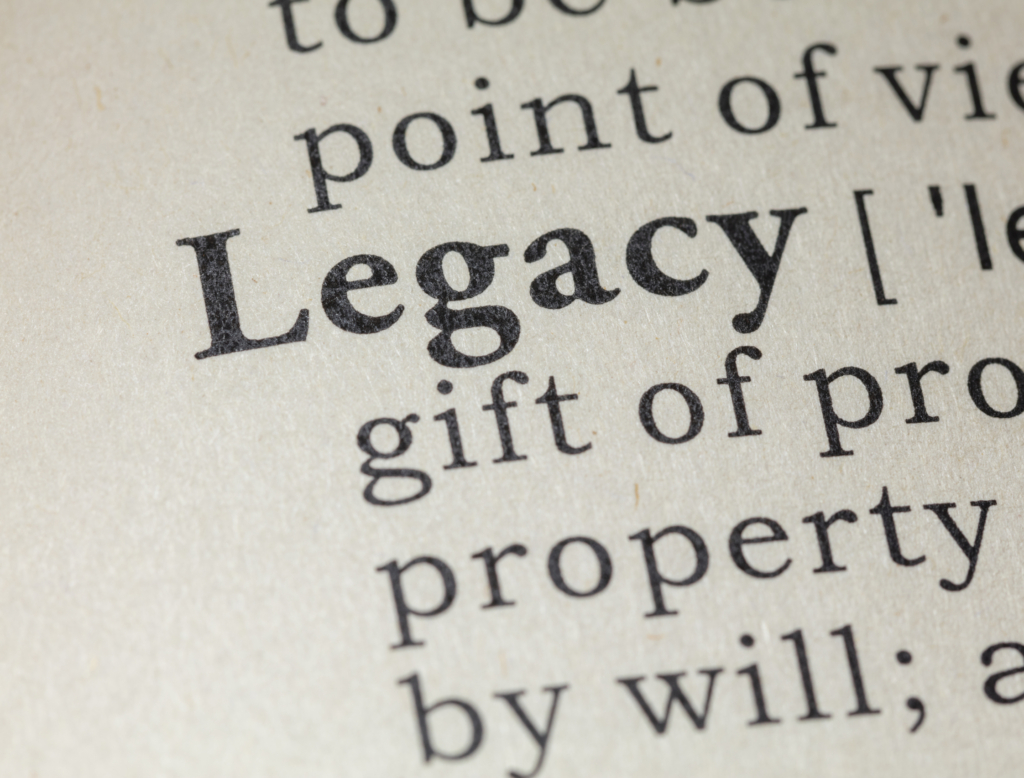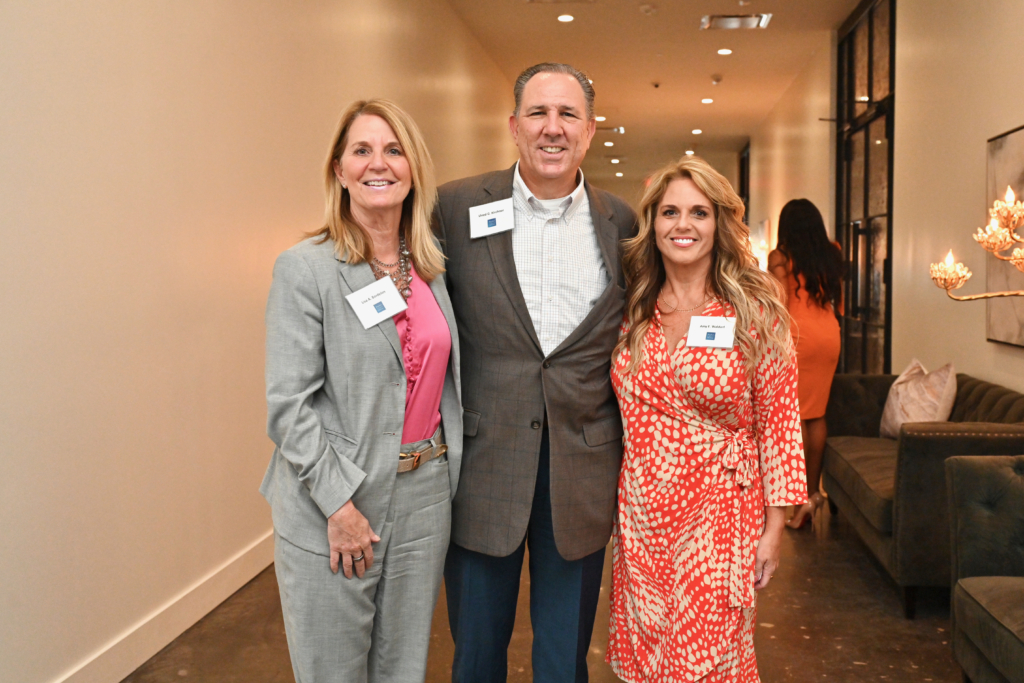Year-End Match Opportunity! Your donation multiplies. Donate now ➔
Year-End Match Opportunity! Your donation multiplies. Donate now ➔
Since graduating from Baylor College of Medicine’s Physician Assistant Program in 1974, James (“Jim”) Gilliam’s sense of adventure has taken him around the world. To further the educational mission of the College for “taking a chance” on him, he and his wife, Laura, decided to make a planned gift.
By including Baylor in their estate plans, the couple became members of the Jaworski Society, a group of alumni and friends who wish to leave a legacy that advances knowledge, scientific discovery and patient care.
Now retired, Jim spends his time writing and finishing a law degree from the University of London. Via phone from his home in Warwick, N.Y., he admitted that a profession in the medical field was not his first choice. He envisioned himself working in law enforcement or as an attorney. However, Jim’s life took a detour just before his 14th birthday when he ran away from Port Isabel, Texas, seeking excitement in New Orleans.
Jim later joined the United States Coast Guard and enrolled in pre-med courses, ultimately completing his under-graduate degree at the University of Houston (UH). While working in the UH Student Health Center, he heard about Baylor’s then brand new Physician Assistant Program. Intrigued by the prospect of being among the first of a new type of healthcare provider, he applied.
Jim says he wasn’t initially accepted. Then a spot opened up. “I was the last one to be let into the Baylor Physician Assistant Program’s second cohort,” he said.
Jim recalls having a fantastic and intellectually stimulating experience at the College. In particular, he remembers hearing Dr. Christian Bernard speak to Baylor students about performing the world’s first heart transplant. Little did Jim know that he eventually would assist in the second ever living donor heart transplant as Chief Physician Assistant of Cardiovascular Surgery at Temple University Hospital in Philadelphia.
Retirement has not slowed Jim down. In 2008, he began drafting his first novel, “Point Deception,” while working as a physician assistant on a Navy Military Sealift Command ship off the Kuwaiti coast. After retiring in 2010, he was able to devote more time to writing. “Point Deception” won the Texas Association of Authors’ 2012 Best Fiction Award and a 2013 Beverly Hills Book Award. After finishing his law degree, he said he wants to open a legal clinic for the underserved.
The education Jim received at Baylor opened the door to a rewarding career during which he travelled extensively, contributed to medical journals and textbooks and met his wife of 38 years. The decision to make a planned gift to the College was an easy one for the Gilliams. “Once we decided on this course of action, the mechanics were simple and the staff was extremely helpful,” said Jim. When asked about what advice he had for those considering a bequest to the College, he said, “Once you decide to pay it forward to the Baylor ideal, don’t wait. Act now.”
Henderson, Texas, natives Ruth and David Rusk have a high affinity for Baylor College of Medicine. Ruth credits being alive and active 17 years after her initial breast cancer diagnosis to the world-class care she received as a patient of C. Kent Osborne, M.D., current director of the Dan L Duncan Comprehensive Cancer Center and a former director of the Lester and Sue Smith Breast Center. Her experiences as a breast cancer survivor motivated the Rusks to contribute to the College’s efforts to find a cure for the disease.
Both Ruth and David earned master’s degrees in mathematics from The University of Texas at Austin, and Ruth is a math tutor at Lone Star College-Montgomery. Needless to say, the Rusks are good with numbers. They understood that a charitable gift annuity to Baylor College of Medicine would both support their philanthropic priorities at the College and provide them with a fixed income for the rest of their lives. That’s meant an additional revenue source in their retirement, which they began early so they could enjoy hiking, biking and traveling together.
“The charitable gift annuity was very easy to set up. There are flexible options concerning who can be a beneficiary. We’ve been pleased since we started it in 2007,” Ruth said by phone when she and David took a break from riding their bikes through trails near their home in The Woodlands, Texas. “The Office of Institutional Advancement and Alumni Affairs was also very helpful.”
No strangers to charitable giving, the Rusks previously created an endowed scholarship fund for students in the bio-medical sciences at Rice University, Ruth’s alma mater, in the mid-1990s. In the early 2000s, the Rusks shifted the scholarship fund’s aim to support students who would enter Baylor’s School of Medicine after receiving their undergraduate degrees. “We thought that supporting future physicians and scientists would be a good way to help [cure cancer],” said Ruth.
The couple’s philanthropic journey at Baylor began with a gift that allowed them to purchase two squares on a quilt to raise money for what would become the Lester and Sue Smith Breast Center. They later established an endowed research fund at the Center. Ruth and David also have been volunteer docents for the College’s Pink Ribbon House project, which involves paid tours of luxury homes. Tour proceeds fund breast cancer research and care at the Smith Breast Center. Ruth’s satisfaction with the treatment she received from Dr. Osborne motivated her to turn to the College for other areas of specialty care. She also recommended the Breast Center to a friend, who Ruth informs us is doing well.
The Rusks know that their decision to set up a charitable gift annuity was a smart choice for them and for the College. When asked how she felt about the gift annuity, Ruth said, “Good. It’s nice to have that steady income.”
Virginia Clark and Baylor College of Medicine enjoy a long relationship. Sarah Selleck, M.D., assistant professor in the Section of Geriatrics, served as Ms. Clark’s late mother’s doctor and provided an impressive level of comfort and care.
“She was so considerate, never once condescending, just unbelievably patient. She was incredible,” says Ms. Clark of Dr. Selleck.
Witnessing Dr. Selleck and her team go the extra mile to ensure a greater quality of life for a beloved family member inspired Ms. Clark to begin her philanthropic journey with Baylor College of Medicine. She and her sibling gave a gift to the College in honor of Dr. Selleck. Later, she restructured her Individual Retirement Account (IRA) to make the College’s Huffington Center on Aging one of its major beneficiaries. She points out that using an IRA to make a gift to the College is one of the most cost-effective methods of contributing.
In addition to support of the department that gave her mother comfort, Ms. Clark also looks to the future with an endowment to support medical student scholarships. “Young doctors are graduating frequently with a significant amount of debt and that constrains them to go into high-paying specialties… that’s not where we really need more people,” Ms. Clark explains,
“We need more family doctors, geriatricians, pediatricians, OB-GYNs… those are the areas where we really need more physicians, but financial pressures force them to become specialists. It’s a vicious circle.”
As a retired geophysicist, Ms. Clark enjoys knowing that her donations have sent students and faculty to conferences, exposing them to some of the most innovative medical research being conducted today. She knows how exciting it can be to see firsthand the scientific advances on the horizon and how direct exposure to industry leaders enriches a lifelong education.
“What I hope is that… we will be educating more young physicians who will be in charge of giving the appropriate level of care so that, if we’re lucky enough to age, you don’t end up [being] overtreated,” she says.
In addition to her work with students, Ms. Clark serves on the Center for Medical Ethics and Health Policy Advisory Council and holds a lifetime membership with The Partnership for Baylor College of Medicine. A regular attendee of Partnership events, she lauds the volunteer group’s work in making the College’s world-class science accessible to a general audience. To Ms. Clark, supporting education bridges the gap between honoring those who bettered the past and intellectually nourishing those who will better the future.
Bill and Sonya Carpenter have led a rich and full life together. Bill is a Korean War veteran and his 38-year career with Shell Oil Company took the family all over the United States—to Houston, New York, Los Angeles, San Francisco, St. Louis, New Orleans—as well as a stay in Saudi Arabia. Bill retired in 1991, allowing him and Sonya to pursue their interests, including travel, golf, fishing and bridge.
Bill and Sonya are longtime donors to Baylor College of Medicine. They have always targeted their philanthropy to research. As Bill put it recently, “Research is paving the way to the future. I am sitting here because of research and the care I received at Baylor.” In 1986, Bill was diagnosed with a liver ailment later revealed to be hepatitis C virus (HCV), a chronic condition that can eventually destroy the liver. After years of procedures, treatments and anxious waiting, Bill was given a liver transplant in 2007. With the help of newer, more effective medications, he has been cured of HCV. He credits Baylor medical staff with saving his life.
Thankfulness and appreciation fuel the Carpenters’ philanthropy. Baylor focuses on translating the discoveries of the laboratory to new treatments, which benefit patients everywhere.
The Carpenters also are very adept in how they make donations. After a certain age, individuals are required to withdraw funds from their Individual Retirement Accounts (IRAs). These withdrawals are subject to full federal income taxes. A smart way to avoid such taxes and increase the impact of your contribution is to use an IRA rollover, in which funds are transferred directly to charities of your choice, up to $100,000 a year without the burden of taxes. Many retirees, such as the Carpenters, take advantage of this tax benefit.
“We have been truly blessed,” says Sonya. Through thoughtful philanthropy, they are truly making a difference.
Years ago, when Nancy Parkans Ehrenkranz was a college student and just starting out on her own, she was guided by her uncle, an investment broker, about the importance of saving money and watching earnings grow at an early age. She took his advice to heart, and opened an investment account that she contributed to as soon as she graduated and began working. “I didn’t have a lot to put aside, but I always paid my savings account first,” she remembers.
Now an independent writer/editor and marketing consultant, as well as a seasoned community volunteer, Nancy has combined her uncle’s wisdom with her belief in karma and “doing right by others.” Partnering with Roberta Herman, executive director of the Houston Jewish Community Foundation, she established a permanent endowment in memory of her mother, Morissa Parkans, that will benefit in perpetuity both the HJCF and the Alzheimer’s Disease and Memory Disorders Center at Baylor College of Medicine.
“This was a win-win to me. Establishing an endowment fund through my will and the HJCF, which benefits Baylor, was simple and easy to create,” she explains. “I wanted to do something meaningful in my mother’s name, and working with Roberta and Baylor’s planned giving team, it was a seamless, uncomplicated process.”
“Because she so strongly believes in giving back and passing along her passion for philanthropy, Nancy also established a legacy fund at HJCF that will allow her step-children, Jenny and Scott, the opportunity to contribute funds to organizations that matter to them in the years to come.
“It’s so easy to make a difference and pass this philosophy on to future generations if we plan ahead,” she explains. “If my small gift to Baylor supports research that eradicates Alzheimer’s Disease, while also serving as an example to those I love, I will indeed know I’ve done something significant that will last beyond my lifetime.”
Wendell D. Erwin, M.D., wanted to be a doctor for as long as he can remember. After graduating from Baylor University, he made the natural progression to Baylor College of Medicine in 1962. He retired in 1999 after a successful career as an orthopedic surgeon with BCM and Texas Children’s Hospital. He now serves on the BCM Alumni Cabinet and as the alumni representative on the BCM Board of Trustees. “After being away for so many years, serving on the cabinet and board are a meaningful way for me to reconnect with the BCM community,” Dr. Erwin said recently.
Dr. Erwin and his wife Jenny made the decision to support the Jenny & Wendell D. Erwin, M.D. ’66 Endowed Scholarship Fund through funding a $100,000 two-life charitable gift annuity (CGA). They funded the CGA with an asset that they weren’t going to sell and that generated comparable income as the CGA. Giving through a CGA also allowed the Erwins to give more than they otherwise would have and increased their scholarship to the minimum amount to be a fully funded endowment.
“Funding a CGA allowed us to have the best of both worlds—benefitting BCM and still having a fixed income.”
Dr. Erwin believes that it’s important to help others and give them an opportunity to go to medical school. While he was a student, Dr. Erwin worked a variety of jobs, including working the switchboard at the security desk at the Cullen Building entrance of BCM.
After Dr. Erwin graduated in 1966, he considered residency training on the east coast but decided to stay in Houston at Ben Taub General Hospital. “I was looking to broaden my education and found that I didn’t need to go far. Ben Taub was by far the superior institution for training,” he said.
Although retired, Dr. Erwin remains very active with various hobbies, including skiing, playing the piano, golf, cycling and reading. And, of course, he and Mrs. Erwin spend time with their two grandchildren every chance they get.
In 2006, at the age of 46, Karen Gorman was the picture of perfect health. She kept an active lifestyle, playing co-ed soccer on the weekends and traveling as often as her schedule allowed. So it was unusual when Karen suddenly became ill while vacationing.
After returning home, Karen made an appointment with her gastroenterologist, who discovered a tumor in her liver. It was recommended that she see John Goss, M.D., chief of abdominal transplantation at Baylor College of Medicine, to have the mass removed.
Like many patients, Karen was anxious about undergoing the surgery. She says her nerves were eased by looking into Dr. Goss’s background and finding one phrase repeated over and over: “He is the best!”
Within one month, Karen was on the operating room table and her tumor was removed. She says she believes Dr. Goss saved her life.
“The surgery kicked my butt, but I had no recovery issues, and I owe that to Dr. Goss’s care,” she said. “He’s my hero.”
While in the hospital, Karen agreed to be visited by medical students, so that they could learn more about caring for her condition. Karen says she strives to follow the example of her parents, Pat and Fran, who always have made a priority of helping others and volunteering.
She didn’t stop there, however. With a new appreciation for life, Karen set out to help the causes that matter most to her by establishing a living trust. In addition to providing Karen and her family with financial security, her living trust enabled her to make thoughtful charitable gifts as part of her long-range estate and financial plans. She chose to leave the remainder of her estate to several organizations, including Baylor College of Medicine, where her gift will support research in the BCM Liver, Kidney and Pancreas Center.
“I feel good about making this gift, and even smile when I think about it. It’s all about leaving my mark by helping others,” Karen said.
Today, Karen is as active as ever. She hung up her soccer cleats for a tennis racket and continues to travel, recently swimming with whale sharks and manta rays while visiting Cozumel!
Jane and her husband, Stephen Marmion, recently made the decision to include Baylor College of Medicine in their wills. This was easily completed by adding a codicil, an amendment to their existing wills. A bequest is the most common way to support charity through one’s estate plan. Through the years, the Marmions have supported the Smith Breast Center but believed a planned gift would allow them to make a larger contribution. As part of this decision, they have also joined the Jaworski Society.
“We have been very interested in the work of the doctors and scientists at BCM. We also enjoy going to some of the events and activities. It just makes sense to include this interest in our hope for future generations,” Stephen Marmion said.
Jane believes that her calling to become a volunteer at BCM was God’s provision of just the right timing and family loyalty.
“My love for Baylor College of Medicine is deep rooted in my family history. It goes back to my father who was a Baylor University graduate as well as medically trained by Baylor here in Houston,” Jane said recently. Her father, Albert W. “Bill” Jester, was a 1944 graduate. Stephen Marmion, likewise, is supportive of the BCM efforts and has been at his wife’s side through all of her advocacy for breast cancer care. Their involvement with BCM dates back to 1999 with the formation of the first Breast Center Advisory Council. As lifetime members of The Partnership, BCM’s largest citizen advocate group, they support The Partnership’s mission to inform individuals, foundations and corporations about BCM’s premier education, research and patient care programs.
The legacy from her father influenced Jane’s decision when dear friends asked her to become involved in the initial efforts to support Dr. Kent Osborne as he moved to BCM from San Antonio. She points out that one of Komen Houston Affiliate’s first grants went to BCM in 1992. In 1999-2000 a Komen Houston Affiliate grant purchased a mammogram suite in the BCM Breast Center. Jane’s current interest is in developing funding for patient care and family support.
“It thrills me to be asked to help. God provided me with an opportunity, and I had the availability to serve and to organize some of the initial efforts,” she said. That is exactly what Jane is good at doing. Her behind-the-scenes brainstorming with friends is at the core of many of the committees and women’s groups who start a movement and then get an idea off the ground, benefiting others for years to come.
In 2003 Jane co-chaired the first Pink Ribbon House for the BCM Breast Center. This idea, developed by Royce Hassell and Charlotte Rhodes, is greatly supported by the Advisory Council and the community. Today, it remains the primary fundraiser produced by the Council, seeing funds grow with each Pink Ribbon House. “Many of us were there for the beginning of things. And, we’re still here,” she said.
She has followed up that initial interest as an advocate for patient care, preventive screenings and after-care.
“I believe we need to be concerned with families who are experiencing illness such as breast cancer. We need support groups and active volunteers. As we focus on research to produce a cure for breast cancer, we also need that same focus on the patient care and family support,” she said.









